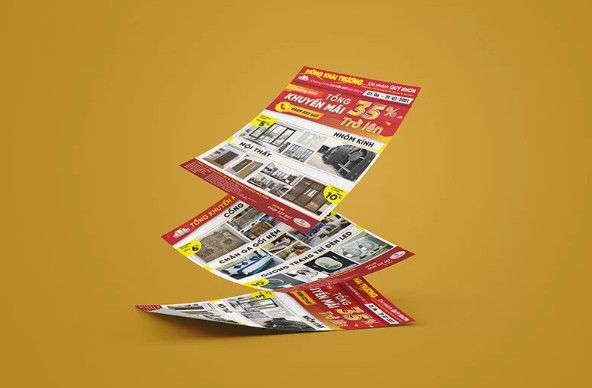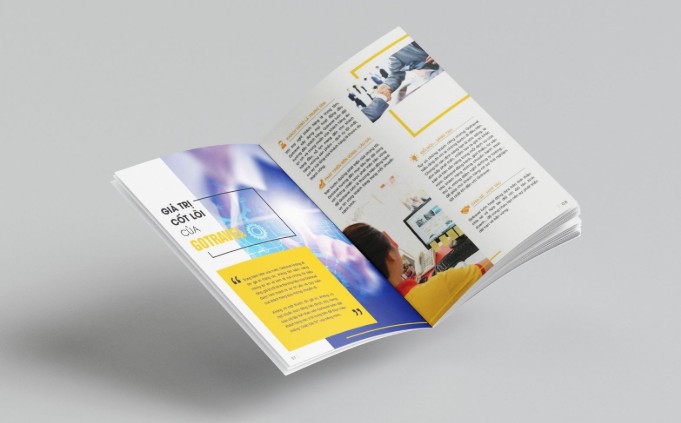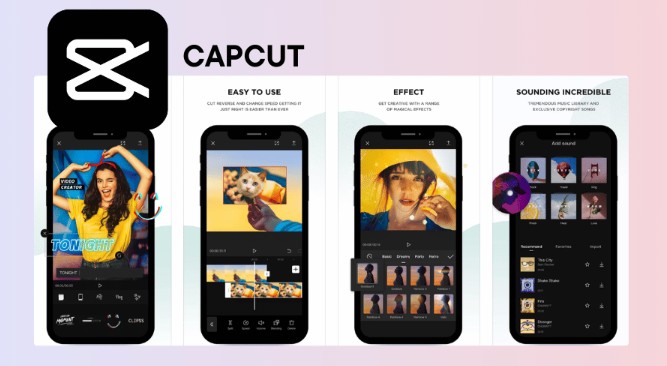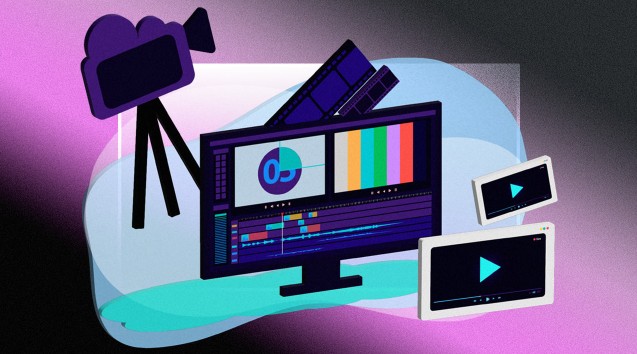Best Selling Products
What is a Logo? Essential Features to Create a Brand Impression
Nội dung
- 1. What is a logo?
- 2. Commonly used logo
- 3. The importance of logos for businesses
- 3.1. Defining brand identity
- 3.2. Increase brand awareness
- 3.3. Attract customers, increase sales revenue
- 3.4. Building brand loyalty
- 3.5. Synchronize and link brands across all media
- 3.6. Demonstrate the vision and strength of the business
- 3.7. Helps brands compete with other competitors
- 4. The meaning of brand logo design
- 4.1. What does a logo design represent?
- 4.2. Meaning of symbols and shapes in logo design
- 5. Basic features in logo design
- 5.1. Requirements
- 5.2. Shape
- 5.3. Color
- 6. Tips for designing professional brand logos
A logo is a symbol made up of text and images to identify a business. A good logo should represent the company's industry, field and brand values.
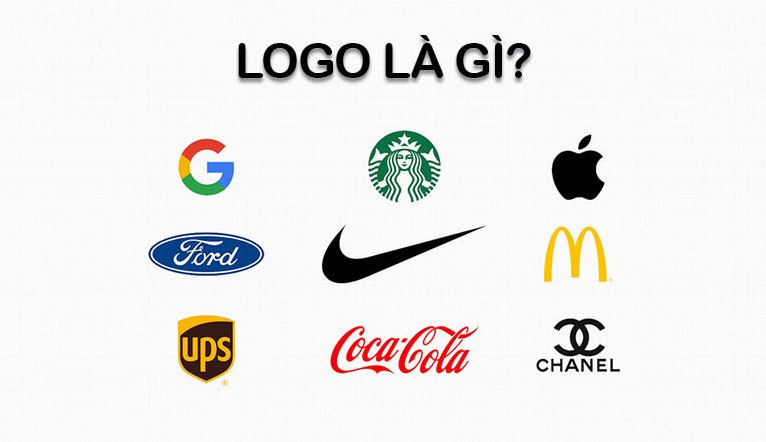
A logo is not only a visual representation of a brand, it is also the first “face” that customers remember when mentioning a business. Whether it is a simple symbol or an elaborate design, a logo carries its own message, reflecting the values, personality and vision of that brand. But what is a logo really and what elements make an effective, memorable logo?
In this article, we will explore the concept of what a logo is and analyze the basic characteristics of logo design that any designer needs to understand. If you are looking for a foundation to start building a professional brand image, this will be an extremely important first step.
1. What is a logo?
A logo is a symbol made up of text and images that identifies a business. A good logo should represent the company's industry, field, and brand values. Logo design is the creation of a perfect visual brand for a company. A logo can be a symbol, a word, and sometimes a tagline.
2. Commonly used logo
Website : All businesses that own websites use logos to increase brand recognition and consistency online. If you are creating a website, it is important to note that the logo must be displayed in a location that is easily recognizable to visitors. The logo is usually placed in the header or footer of a website, aligned left and linked to the website's home page.
(1).png)
Business Cards: When designing a business card, remember that it is like a small souvenir, something that potential customers can keep and remember you by. Adding your company logo on the card will help customers remember your brand in their minds, and increase the likelihood of returning to you and your business.
Product Packaging: Printing your logo on all of your products and merchandise is key to increasing brand recognition. It’s also a great way to build trust and loyalty. Imagine someone walking down the street carrying a product with your company logo on it, it’s free advertising for your company.
Customer Communications: Your logo should appear in all forms of customer communications including emails, newsletters, campaigns, and instant messaging. Your logo should be easily recognizable to your customers so they know immediately who they are talking to. This helps reinforce your brand identity and increases customer confidence in your company.
Social Media: Having your logo on social media channels helps develop branded presence. Since social media is all about sharing and spreading, you need to take advantage of this and ensure that all images posted on your account have your company’s branding. This applies not only to posts on Instagram, Facebook, LinkedIn, YouTube but also to other platforms like Reddit, Pinterest, Quora, etc.
Internal content: In addition to external uses, logos also serve internal purposes, promoting company culture. Events such as company-wide presentations, emails or training sessions should always include the company logo. In addition, the meaning of the logo must be clearly communicated to all employees.
3. The importance of logos for businesses
3.1. Defining brand identity
Along with identifying your business, a good logo also provides customers with some important information about your company. A logo can communicate to customers what your industry is like, what services you offer, who your target audience is, and what your brand values are.
.png)
3.2. Increase brand awareness
A logo can create strong visual associations with a business. This association helps customers remember your brand, it reminds them that your brand exists. Think of brands like Apple, Nike or McDonald's, these logos are so popular that they are instantly recognizable with or without their names.
3.3. Attract customers, increase sales revenue
Logos with attractive and interesting designs always attract consumers easily. When your logo is attractive and leaves an impression on customers' minds, they are more likely to choose your company's products. The more customers you attract, the easier it will be to sell and the higher your revenue will be.
3.4. Building brand loyalty
The reputation of a brand is very important and any company pays attention to it. Many consumers today will trust and choose a new product because it has the same brand and logo as a previous product they have used and felt satisfied with.
As they use more and more of the brand’s products, they will become loyal customers of the brand. Therefore, the brand’s logo needs to be consistent, durable over time, and achieve the goal of making customers trust and choose the product just by looking at the logo.
3.5. Synchronize and link brands across all media
For a brand to be built strongly, it is necessary to synchronize the logo on all media, both online and offline. Specifically, on all marketing publications, packaging, media, websites, outdoor advertising, etc. That is the way to advertise the brand as well as create synchronization, link the image, brand message everywhere that can reach customers.
3.6. Demonstrate the vision and strength of the business
A logo can contribute to creating professionalism and brand strength so that customers can trust and respect it. Once that is built, the company's brand will be raised to a new level. However, not all logos are successful in doing so because they need to be creative, unique, and strongly linked to the company's vision and mission.
3.7. Helps brands compete with other competitors
Logos not only help increase brand recognition but also help increase competitiveness with other competitors in the market. Especially for consumer products, the time for customers to decide to choose a product is very short. Therefore, brands with more unique and interesting logos and packaging will increase the possibility of being chosen compared to other brands' products.
4. The meaning of brand logo design
.png)
4.1. What does a logo design represent?
A logo is not just a symbol owned by each company, but it has much more meaning. With the logo design using the company's typical colors and symbols, it shows the personality, brand image, vision and mission that the company is aiming for. In addition, the logo also shows the uniqueness of the brand and the value that the product or company can bring to customers.
4.2. Meaning of symbols and shapes in logo design
Circle (Sun): This is a symbol that symbolizes the source of eternal life, rebirth, splendor and brilliance. The message that the circle or Sun logo brings is superiority, perfection, brightness, and can create a sense of trust for the viewer.
Triangle: This is a symbol representing mountains, representing balance, stability and majesty.
Square: The ancient Vietnamese people had the concept of “round sky, square earth” – this is also shown in fairy tales. Therefore, for the Vietnamese, the square is considered the earth, representing stability and peace.
Star shape: The meaning of the star symbol is aspiration, dream towards the future, towards the best things.
Cross: A symbol of healing, used for businesses operating in the medical and pharmaceutical industries. We can see this logo in hospitals and ambulances.
Human figure: The human symbol used in the logo represents the meaning of discovering new things and reaching for the good in the future.
Animal image: Depending on the characteristics of each animal, the brand chooses a suitable logo to express the brand's personality.
Trees, grass, flowers and leaves: These symbols represent vitality, strength, beauty and youth.
.png)
Arrow: The arrow symbol represents reaching forward, conquest, development and the future.
Lightning: Is a symbol of decisiveness, strength and desire to win.
Clouds: The floating cloud symbol represents lightness, delicacy and freedom.
Water waves: This symbol is often used for logos of products and services related to the sea such as seafood cuisine, tourism, and marine services, representing the quintessence of the sea.
Heart: A very familiar symbol, expressing love, care, and warmth of the human heart.
Images of tools and equipment: Depending on the field of operation, each business chooses appropriate tool and equipment symbols for its logo.
Shield: A shield is an object used to shield when fighting in ancient battles, it represents the meaning of protection, shelter and fighting.
Crown: A royal symbol, chosen by brands as a logo to express prestige, class and authority.
5. Basic features in logo design
According to Al Ries and Laura Ries (1998), Alycia Perry (2003) and several other branding experts, a brand logo needs to meet certain requirements to be useful and successful.
.png)
5.1. Requirements
Distinctive: The logo should not use the same or similar symbols as other logos on the market, but should be designed to create a visual impression on viewers and be easily distinguished from other logos. This also increases the possibility of legal protection.
Simple, easy to remember: According to research, human attention span and concentration are getting shorter, so the logo must be designed as simply as possible for customers to easily remember.
Adaptability: This requirement means that the logo must be suitable for the culture and language of many countries around the world so that when the brand expands abroad, it can still adapt to the market.
Meaningful: A logo should have a meaningful story behind it. It could be the startup story, the name of the brand founder, the benefits it brings to customers and society, etc.
5.2. Shape
Font: Depending on the color and brand characteristics, choose the appropriate font, uppercase - lowercase letters, bold and light, and color. When designing a logo with letter characters, businesses can use the full name of the brand or an abbreviation.
Image: The logo image should be simple and represent the product or service the business provides.
Tagline: The tagline, also known as the introduction line, should be short, about 5-7 words, closely linked to the brand's essence. To help customers better understand the brand.
.png)
5.3. Color
The trend of choosing colors is also minimalist, attractive, easy to notice. Logo designers can choose colors that are compatible with the philosophy of yin and yang, the five elements, etc. According to research, the following industries are suitable for each color:
Kim: Government office, Bank, Finance - Accounting, Technology, Architecture,...
Wood: School – Education, Flowers, Fashion, Travel, Public,…
Thuy: Cleaning services, Recruitment, Beauty care, Medical - therapy,...
Fire: Studio, Restaurant, Cafe, Retail Store, Sports Company,…
Land: Construction, Restaurants - Hotels, Real Estate, Companies related to Agriculture,...
6. Tips for designing professional brand logos
Exclusive design, no copying: To show that you are a reputable and professional business, you should not design a logo similar to other competitors, even if it is similar. Make sure your brand logo is unique and one of a kind. If you cannot design your own logo, cooperate with a professional logo design company for the best logo quality.
.png)
Impressive and unique design: To achieve this, businesses should clearly communicate their ideas and requirements to the company’s internal designer. Or businesses can look for famous, reputable designers to collaborate on the design.
Suitable for products and customer tastes: To design a logo that truly has a strong impact on customers, businesses must thoroughly research product characteristics, product preferences, images, and colors of target customers to apply to their logo.
Convey the right message of the business: The brand logo must convey the right spirit that the brand wants to aim for and the message that the brand wants to spread to everyone.
Convenient for printing: Because your logo will be printed on many publications, media, and materials, you need to ensure that the details are not too complicated so that there are no errors when printing, and the size is moderate. The brand logo is printed uniformly on all publications, showing the professionalism, neatness, and carefulness of the brand.
In the article above, SaDesign has shared the meaning and concepts related to Logo. It can be said that Logo is a visual symbol that carries many messages that the business wants to convey. Hopefully, with the above article, you will be able to propose and design a logo that represents your business according to your needs and desires.









































